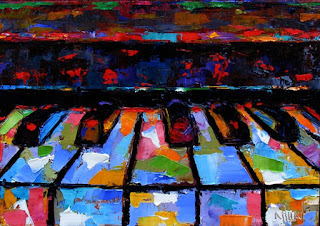
Another year has flown by, and it's hard to believe we're already approaching the year 2018.
Instead of making New Years resolutions you know you won't be keeping, why not do something different for a change? Make a worthwhile New Years resolution to bring the joy of music into your life – even if you never touched a keyboard before!
Sound far fetched? Not at all according to maestro Edward Weiss, teacher, author and composer of piano music for over 15 years.
Listed among Steinway & Sons compilation of professional teachers, and endorsed by David Lanz, one of the original greats of the mesmerizing New Age style of music, Edward brings the joy of musical self- composition to everyone.
As Edward explains: "Most people automatically assume you have to be a gifted musician who's spent years in a conservatory to compose original piano scores. Nothing could be further from the truth.
"Piano Improvisation is a musical art form anyone can learn. It doesn't matter how young or old you are, or if you've never even sat down at a piano or played an instrument in your life."
The secret? Edward's step by step online video instructions allowing his students to literally Look, Listen and Learn.
Outside of an internet connection, the only other thing an aspiring artist needs is a keyboard – and of course the desire to do something different!
Weiss talks about learning piano...
"If you're going to make a New Years resolution, make one that will actually improve your life – and not just set you up with frustrations and disappointments. Creating your own piano music is one of the most fulfilling adventures a person can take. My method lets you do just that - improvising and composing your very own pieces - easily and effortlessly."
Mr. Weiss is currently offering a 50% off New Year special at his website http://www.Quiescencemusic.com

















